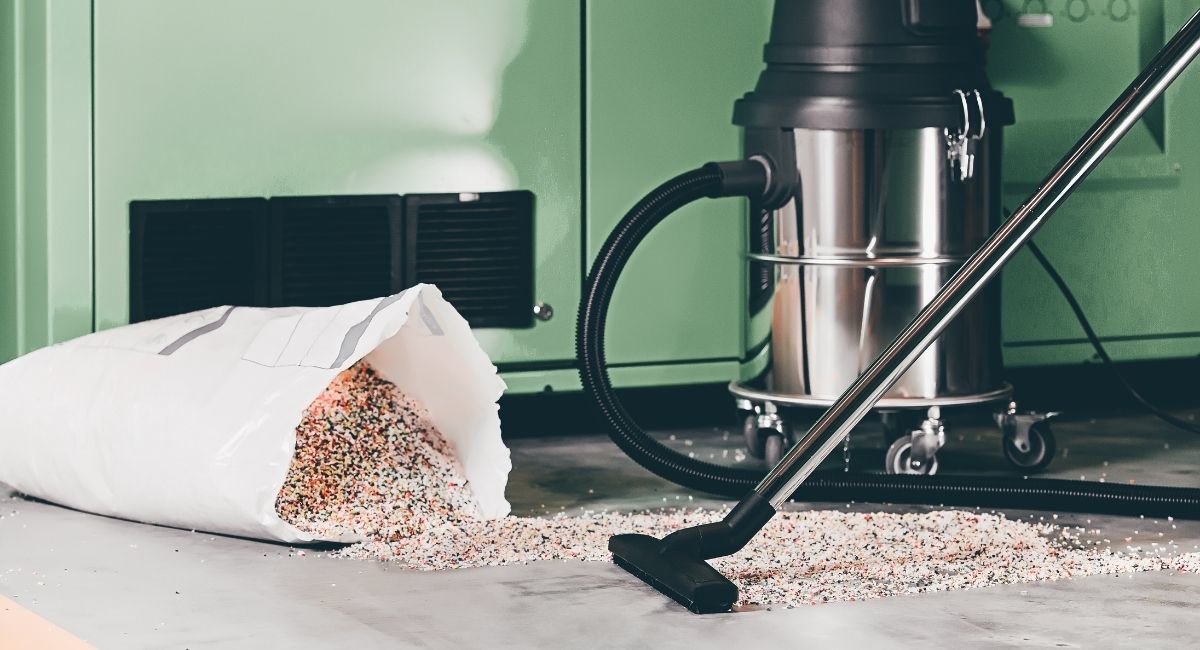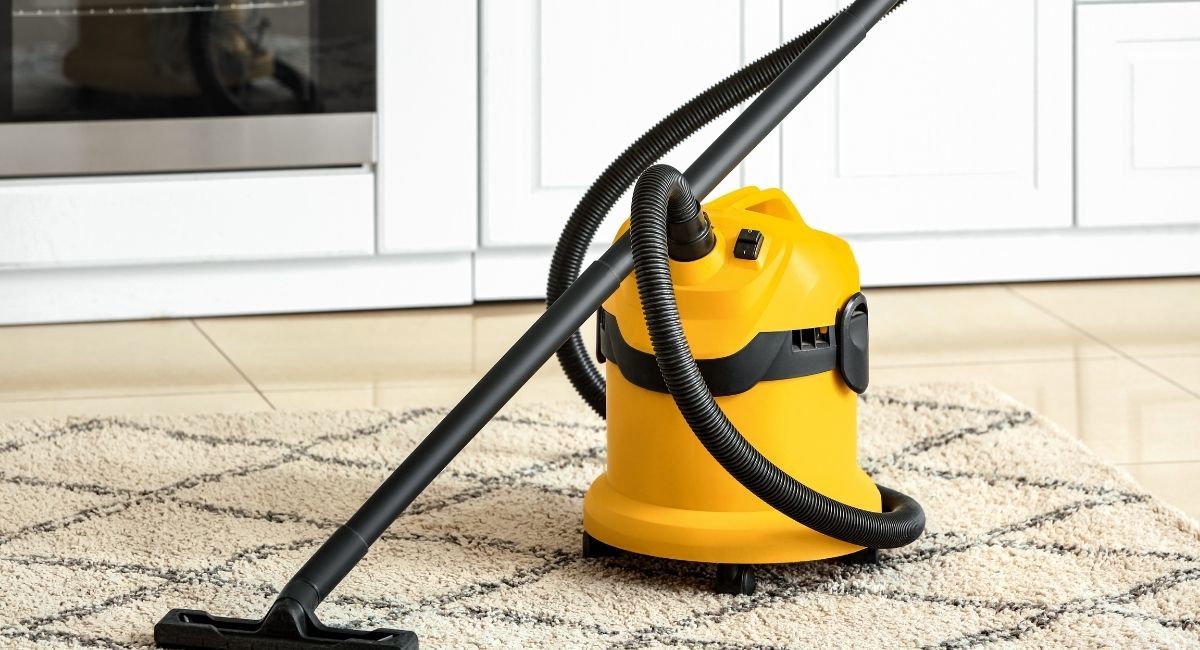Dust Extractor Vs. Shop Vac: Learn the Differences
Many woodworkers and tradesmen face difficulties deciding between a dust extractor and a shop vac for dust control in the workplace.
It’s essential to have a proper dust collection system in any woodworking shop. The dust produced can cause a fire hazard when left under a machine. Hence, it is imperative to understand the tool that you are using.
Using a dust extractor vs. shop vac has pros and cons. So, which one should you go with? I can help you understand the differences between them.
What Is a Dust Extractor?
Most people choose between a shop vac and a dust collector for removing dust at the source. However, there is a third option: a dust extractor. The most efficient dust extractors are those that leave the cleanest air. They’re used in hospitals, museums, and cleanrooms since they do an excellent job at purifying the air.
Dust in the air might enter your lungs and create respiratory problems. It’s important to remember that no matter how good your dust collection system is, it’s no replacement for personal protection equipment like dust masks and respirators.
Dust extractors are utilized on job sites to remove concrete dust, due to the dust’s carcinogenic nature. They filter out the ultra-fine dust particles that might escape a shop vac or regular dust collector.
It is easy to operate this equipment if you have a clear understanding of how they work. Aside from that, you’ll better maintain the tool and receive a higher investment return with proper use.

Dust Extractor Overview
Dust extractors are effective dust collection machines designed to remove dust from the workplace. They can be smaller, moveable units or larger, permanent shop installations.
Dust extractors handle larger quantities of dust than conventional dust collecting instruments like a shop vac. These are perfect for large businesses with more dust-producing machinery. A dust extractor will typically have a dust removal device, a filter, and a blower. Most will also have a bigger intake port, which collects higher amounts of dust and reduces the chances of clogging.
Dust extractors can gather larger particles than shop vacs because of the wider intake hole. Dust extractors can also work if you’re dealing with larger stationary tools that create a significant amount of dust. However, they do not function well with small handheld power tools as compared to shop vacs.
Pros
Cons
What Is a Shop Vac?
Shop vacs are used in huge workshops with built-in dust collectors. They function as an additional tool used to clean up dust and debris left around the shop. Using a shop vac with stationary tools also works well, but you’ll have to empty the vacuum cleaner more often.
Even the best shop vac’s filtering capacity is nowhere near that of a small dust collector. Dust collectors can pull more air and dust at a much faster rate. However, a shop vac is powerful enough to remove the bulk of dust.

Shop Vac Overview
Shop vacs are popular among woodworkers and DIYers, and most of them will have at least one in their workshop to make cleanup faster and easier. These vacuum cleaners function similarly to ordinary vacuum cleaners, but they are more powerful and developed specifically to collect debris and dust created in the workplace.
A shop vac will come with bigger, more durable containers and hoses to manage the normal waste material found in workshops and other industrial locations. They will almost always be on wheels, making them easily transportable.
They include appropriately-sized intake holes that fit on most portable power tools and are simple to attach. While they may not provide the same level of filtration as a dust collecting system, shop vacs are easier to use and require almost no installation.
Shop vacs may not be suitable for use on large fixed equipment or heavy-duty applications due to their smaller size and construction, but they are ideal for smaller portable woodworking tools.
Pros
- Smaller and more convenient to use
- Less expensive
- Ideal for use on single tools
- Functions in both wet and dry conditions
Cons
- Not good for large-scale use
Difference Between a Dust Extractor and Shop Vac
You will undoubtedly want to have an effective dust collection system in your professional workshop. Choosing between a dust extractor and a shop vac might be difficult. However, the decision should be straightforward if you understand their differences.
Dust extractors and shop vacs keep the work environment clean and safe by removing dust and debris. However, the two machines are very different, with different levels of efficiency. Let’s look at the major differences between a dust extractor and a shop vac.
Work Mechanism
Dust extractors are typically more efficient than shop vacs at cleaning the workplace, as they rely on a more complex system. These dust collecting systems are available in single-stage units, ideal for smaller shops, or more powerful two-stage units, suitable for larger shops that produce more wood dust.
Regardless of the dust extractor type, these dust collecting systems operate at a high volume, low-pressure level. This means they don’t create much pressure, but they do collect a lot of dust and airborne particles.
Shop vacs are low volume, high-pressure devices that offer high vacuum power to suck up dust much faster. They are more about speed than volume. Shop vacs often use larger and more powerful motors and smaller intake nozzles to guarantee that the vacuum pressure is concentrated.
Versatility
While these tools both extract dust from the air, versatility is still important. Having a tool that can serve several purposes can save you money by avoiding buying other tools for the same function. The shop vac is the obvious winner when it comes to versatility.
Shop vacs can handle both wet and dry materials, which means you can use it effectively regardless of the conditions. Many shop vacs are versatile tools that can be used for regular vacuuming and dust extraction. Some versions also come with a detachable blower that can be used for a variety of different functions.
Aside from removing dust from your workplace, there isn’t much more you can do with a dust extractor. The best you can home for in terms of versatility is something that can function as both a mobile dust collector and a fixed central dust collecting device.
Best For
Whether you choose a shop vac or a dust extractor, you will have a dependable and effective means to manage dust in your workplace. Due to the variations in size and design, these two pieces of equipment are suitable for various types of users and scenarios.
Dust extractors are ideal for attaching to large stationary equipment that releases considerably more debris than a shop vac can manage. A dust collector will also be more suitable for larger stores due to its higher capacity, especially if you choose the two-stage unit.
Shop vacs are available in more portable versions, making them ideal for small hand-held equipment. In addition, most shop vacs have standard intake holes that fit most portable power tools’ dust ports. Shop vacs are typically best suited for tiny shops because of their limited capacity.
Debris Separation
Debris separation is one of those characteristics that might not be necessary but still beneficial, as it makes your job simpler.
Dust extractors are the apparent winners since a typical model would have an effective two-stage mechanism that separates dirt into small particles for simpler disposal. However, despite its capacity to separate dirt, dust extractors usually filter air in the same way as dust collectors do.
Shop vacs are unable to separate debris, meaning that everything vacuumed will always end up in the same container. For some users, this could result in more effort because they still must separate the waste materials.
Typical Intake Hole Size
The size of the intake hole on the dust collecting system you choose is also important. It determines the tools you can use for connection and whether they will fit properly.
Larger intake holes are common in dust extractors since they capture huge amounts of particles. A 4-inch dust port is standard on most stationary power tools. It allows the machine to take in more dirt while preventing jams.
Most shop vacs have intake holes between 1.5 and 2 inches in diameter, with the latter being the most common. However, even if the intake hole is unsuitable with the power tool you’re using, you can use an adapter to make them operate together. Duct tape is sufficient to resolve the problem for some people.
Size
When it comes to dust collecting systems, size matters. It determines how easy it is to move around and how much room it takes up in your workplace. Shop vacs are smaller and more compact.
They are designed for small hand-held equipment commonly used around various locations across the workplace. As a result, most shop vacuums will not take up much space in your store.
Dust extractors are often bigger than shop vacs since they are built for high volume usage. In addition, the majority of this equipment will come with huge dust collecting bags. Some versions may require a dedicated workshop space for the tool, which can be a considerable disadvantage for users with smaller shops.
Price
Although dust control is essential for any shop, you need to think about how much you’re spending on your dust control equipment. It does not make sense to invest in an expensive dust control system when you rarely work in the shop.
Overall, shop vacs will provide a more extensive dust control solution because most models will be less expensive to purchase and maintain. The cost of dust extractors is a little higher.
Conclusion
When picking a dust extraction system for your shop, there are several factors to consider, including the size of the shop and the number of tools you have. One of the most important considerations you’ll have to make is whether to use a dust extractor or a shop vac. Understanding duster extractor vs shop vac differences will help you make the best decision.
A dust extractor is the more efficient tool. It works well in larger workplaces with several dust-producing power tools. However, the shop vac still does an effective job, especially for people who work in small and medium-sized businesses. Understanding the differences between these two tools is one thing, knowing how to utilize them correctly is another.
Make sure you understand how to utilize these tools to get the best results from them. You should study your user manual or have a friend or family member educate you on how to use it. Eventually, the dust extractor and shop vac will prove to be valuable tools.
Last Updated on November 10, 2021 by Tom Bradly
